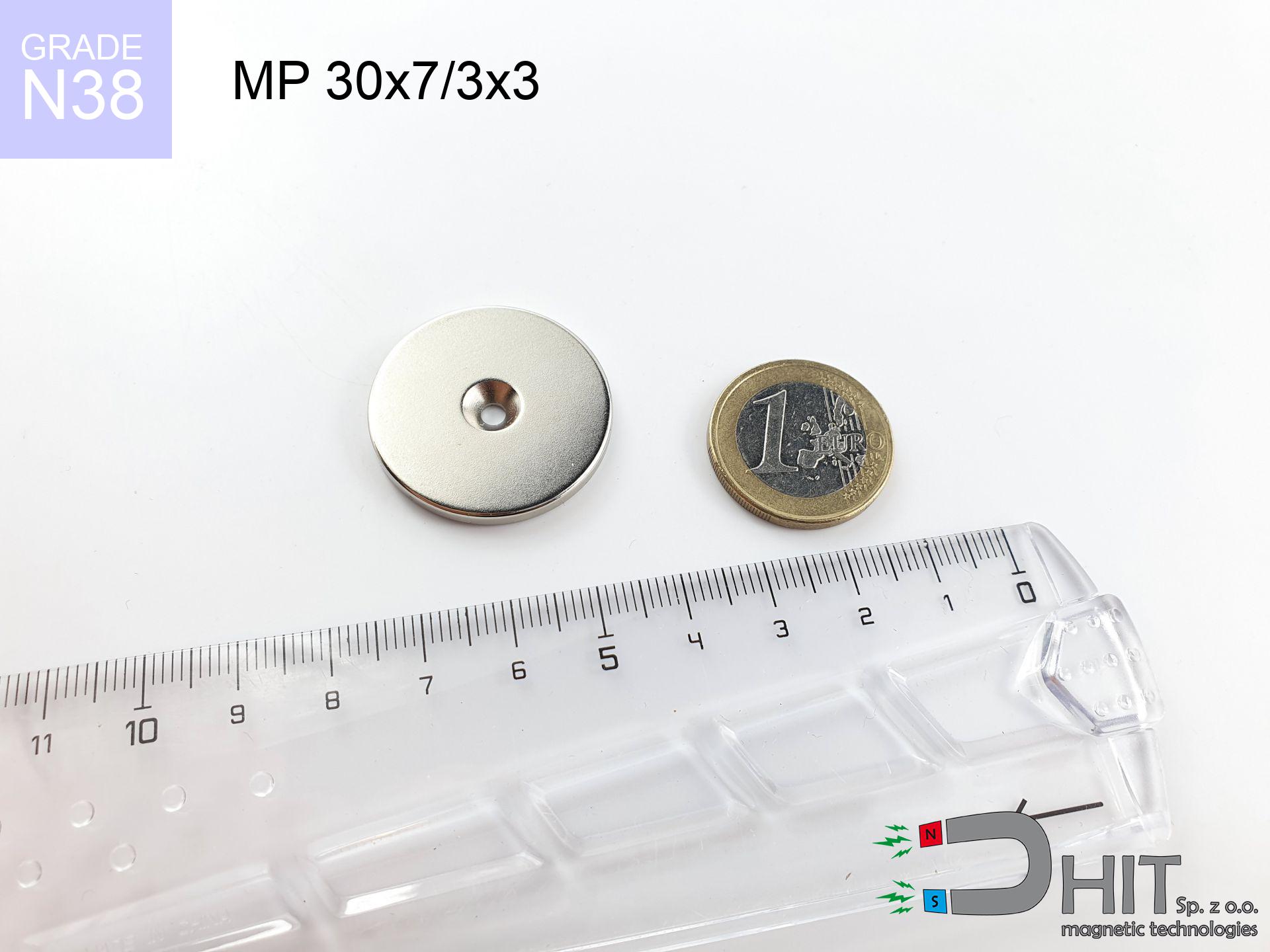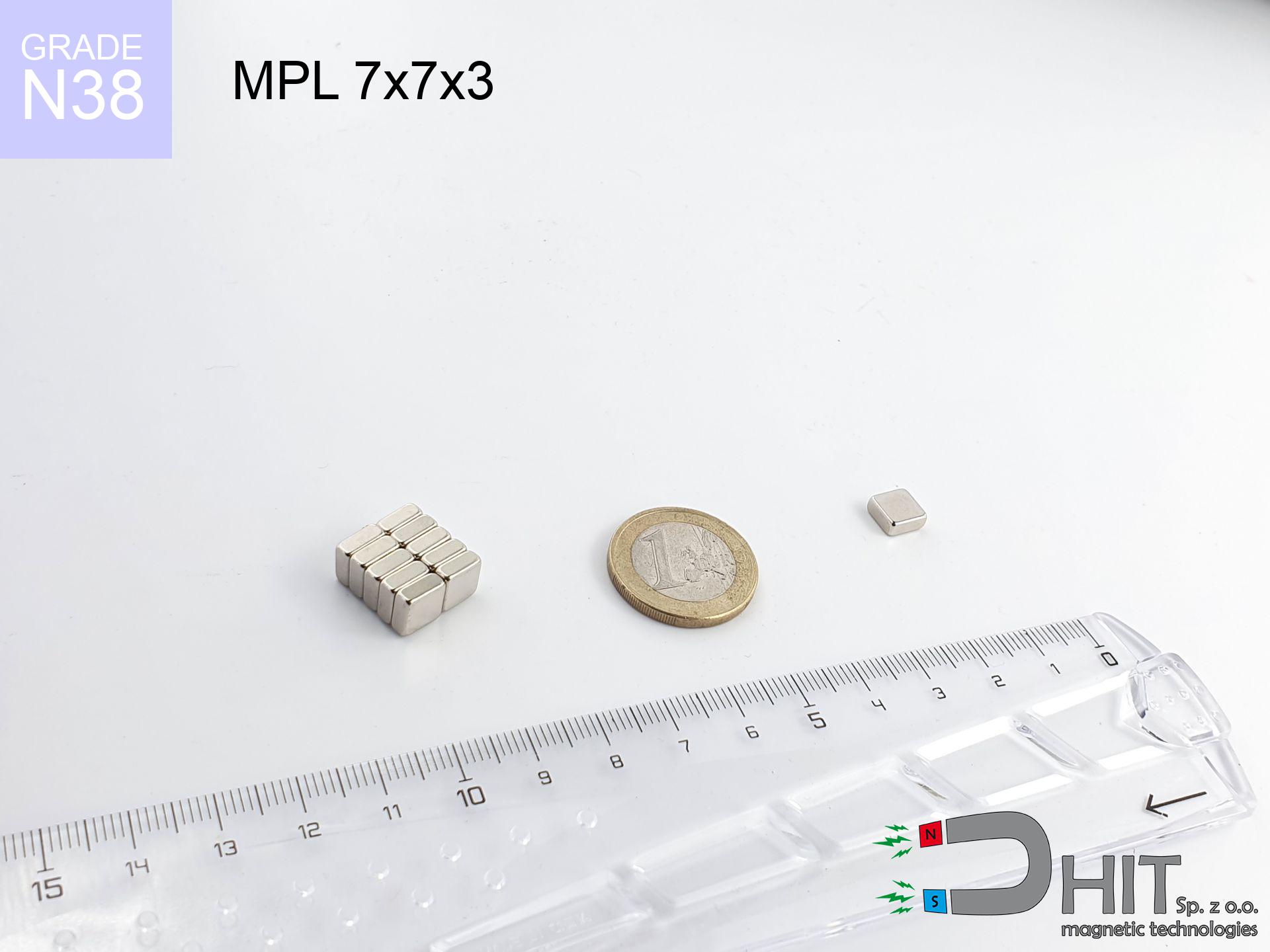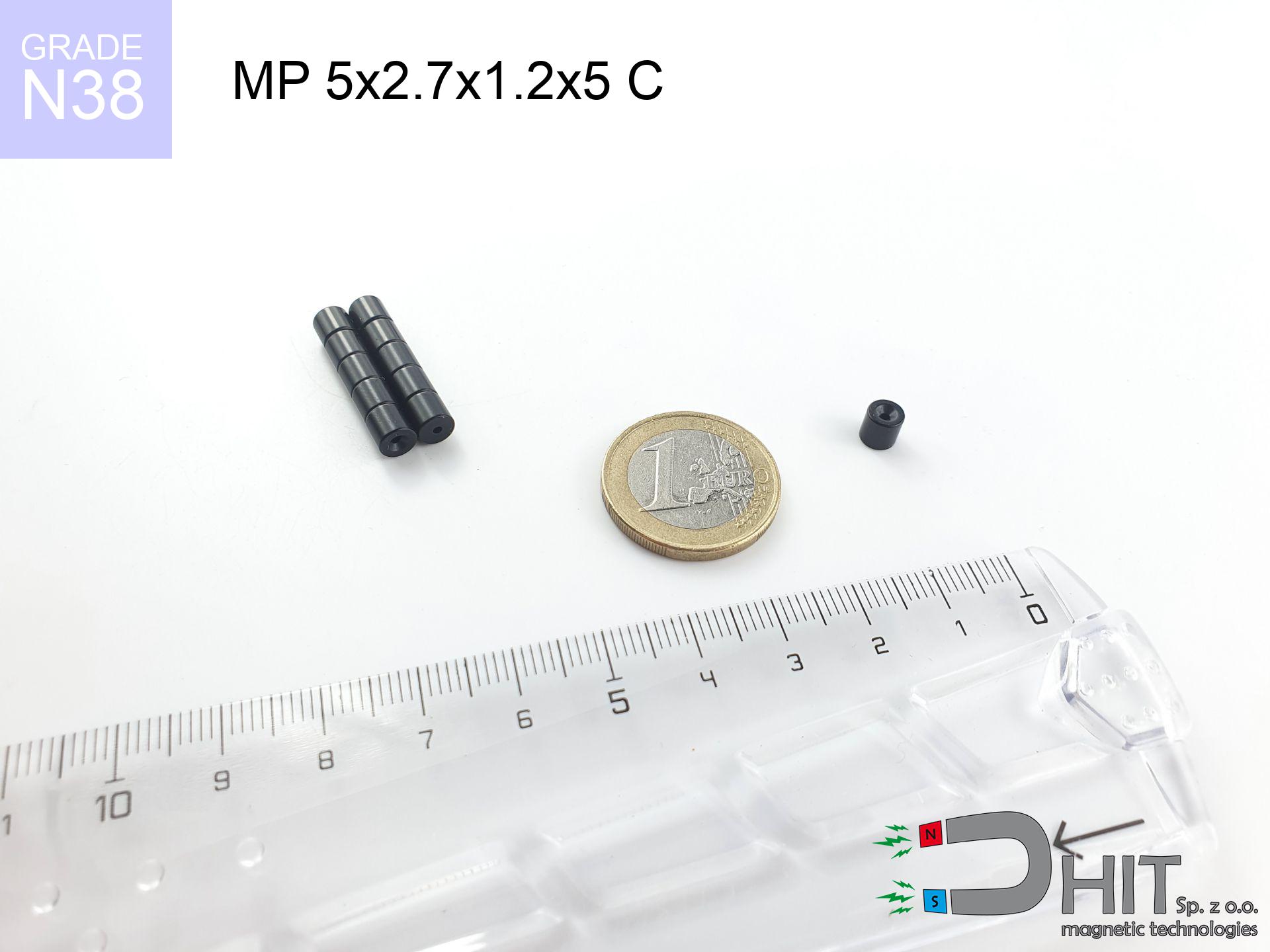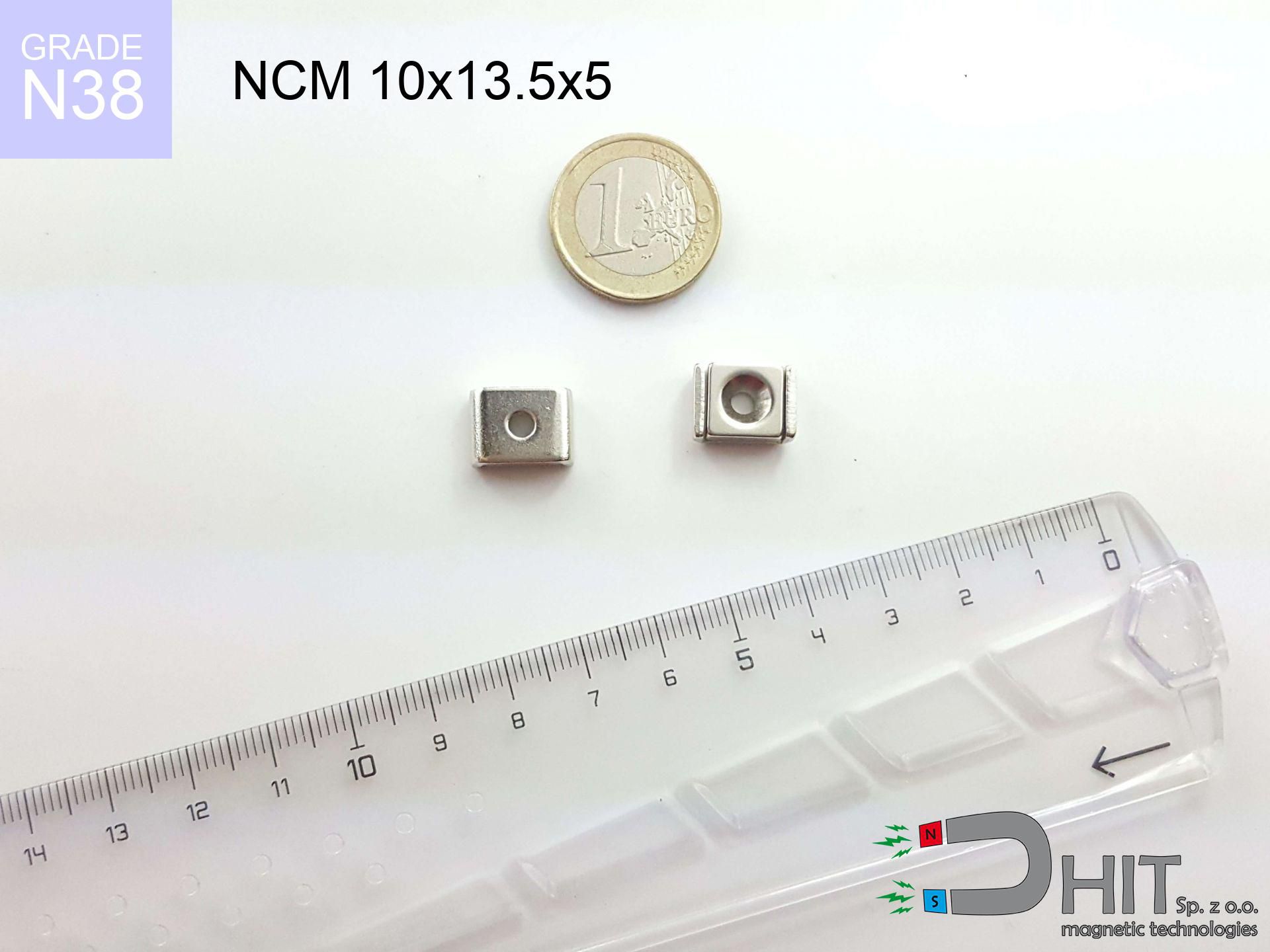UI 39x9x7 [BA] - badge holder
badge holder
Catalog no 150340
GTIN/EAN: 5906301813606
length
39 mm [±1 mm]
Width
9 mm [±1 mm]
Height
7 mm [±1 mm]
Weight
1 g
0.923 ZŁ with VAT / pcs + price for transport
0.750 ZŁ net + 23% VAT / pcs
bulk discounts:
Need more?
Call us
+48 22 499 98 98
or send us a note by means of
request form
through our site.
Parameters and structure of a magnet can be estimated with our
power calculator.
Orders placed before 14:00 will be shipped the same business day.
Technical - UI 39x9x7 [BA] - badge holder
Specification / characteristics - UI 39x9x7 [BA] - badge holder
| properties | values |
|---|---|
| Cat. no. | 150340 |
| GTIN/EAN | 5906301813606 |
| Production/Distribution | Dhit sp. z o.o. |
| Country of origin | Poland / China / Germany |
| Customs code | 85059029 |
| length | 39 mm [±1 mm] |
| Width | 9 mm [±1 mm] |
| Height | 7 mm [±1 mm] |
| Weight | 1 g |
| Manufacturing Tolerance | ±1 mm |
Physical properties of sintered neodymium magnets Nd2Fe14B at 20°C
| properties | values | units |
|---|---|---|
| Vickers hardness | ≥550 | Hv |
| Density | ≥7.4 | g/cm3 |
| Curie Temperature TC | 312 - 380 | °C |
| Curie Temperature TF | 593 - 716 | °F |
| Specific resistance | 150 | μΩ⋅cm |
| Bending strength | 250 | MPa |
| Compressive strength | 1000~1100 | MPa |
| Thermal expansion parallel (∥) to orientation (M) | (3-4) x 10-6 | °C-1 |
| Thermal expansion perpendicular (⊥) to orientation (M) | -(1-3) x 10-6 | °C-1 |
| Young's modulus | 1.7 x 104 | kg/mm² |
Chemical composition
| iron (Fe) | 64% – 68% |
| neodymium (Nd) | 29% – 32% |
| boron (B) | 1.1% – 1.2% |
| dysprosium (Dy) | 0.5% – 2.0% |
| coating (Ni-Cu-Ni) | < 0.05% |
Ecology and recycling (GPSR)
| recyclability (EoL) | 100% |
| recycled raw materials | ~10% (pre-cons) |
| carbon footprint | low / zredukowany |
| waste code (EWC) | 16 02 16 |
Other deals
Advantages as well as disadvantages of rare earth magnets.
Strengths
- They have unchanged lifting capacity, and over more than 10 years their performance decreases symbolically – ~1% (according to theory),
- They show high resistance to demagnetization induced by external field influence,
- In other words, due to the metallic finish of gold, the element becomes visually attractive,
- Neodymium magnets generate maximum magnetic induction on a small area, which allows for strong attraction,
- Through (appropriate) combination of ingredients, they can achieve high thermal resistance, enabling operation at temperatures approaching 230°C and above...
- In view of the potential of flexible molding and customization to specialized projects, neodymium magnets can be produced in a broad palette of shapes and sizes, which increases their versatility,
- Universal use in advanced technology sectors – they find application in data components, brushless drives, medical devices, and multitasking production systems.
- Compactness – despite small sizes they provide effective action, making them ideal for precision applications
Limitations
- They are prone to damage upon heavy impacts. To avoid cracks, it is worth securing magnets using a steel holder. Such protection not only shields the magnet but also increases its resistance to damage
- Neodymium magnets decrease their strength under the influence of heating. As soon as 80°C is exceeded, many of them start losing their power. Therefore, we recommend our special magnets marked [AH], which maintain durability even at temperatures up to 230°C
- Magnets exposed to a humid environment can rust. Therefore during using outdoors, we advise using water-impermeable magnets made of rubber, plastic or other material resistant to moisture
- Due to limitations in realizing nuts and complex shapes in magnets, we propose using a housing - magnetic mount.
- Health risk resulting from small fragments of magnets are risky, when accidentally swallowed, which is particularly important in the context of child health protection. It is also worth noting that small elements of these devices are able to disrupt the diagnostic process medical after entering the body.
- High unit price – neodymium magnets cost more than other types of magnets (e.g. ferrite), which hinders application in large quantities
Lifting parameters
Detachment force of the magnet in optimal conditions – what it depends on?
- using a sheet made of high-permeability steel, serving as a ideal flux conductor
- with a thickness no less than 10 mm
- characterized by lack of roughness
- without any insulating layer between the magnet and steel
- during detachment in a direction vertical to the plane
- at ambient temperature room level
Determinants of lifting force in real conditions
- Gap between magnet and steel – even a fraction of a millimeter of distance (caused e.g. by varnish or dirt) drastically reduces the pulling force, often by half at just 0.5 mm.
- Direction of force – maximum parameter is available only during perpendicular pulling. The force required to slide of the magnet along the surface is typically several times smaller (approx. 1/5 of the lifting capacity).
- Metal thickness – the thinner the sheet, the weaker the hold. Magnetic flux penetrates through instead of generating force.
- Material composition – different alloys attracts identically. Alloy additives weaken the interaction with the magnet.
- Surface condition – ground elements guarantee perfect abutment, which improves field saturation. Uneven metal reduce efficiency.
- Heat – NdFeB sinters have a sensitivity to temperature. When it is hot they lose power, and in frost gain strength (up to a certain limit).
Lifting capacity was assessed with the use of a steel plate with a smooth surface of suitable thickness (min. 20 mm), under perpendicular pulling force, however under parallel forces the lifting capacity is smaller. Additionally, even a small distance between the magnet’s surface and the plate reduces the holding force.
Safety rules for work with neodymium magnets
Avoid contact if allergic
It is widely known that the nickel plating (the usual finish) is a common allergen. For allergy sufferers, prevent touching magnets with bare hands or select versions in plastic housing.
Do not drill into magnets
Powder generated during cutting of magnets is combustible. Avoid drilling into magnets unless you are an expert.
Medical implants
Patients with a pacemaker must keep an large gap from magnets. The magnetism can disrupt the operation of the life-saving device.
Bodily injuries
Big blocks can break fingers instantly. Never put your hand between two strong magnets.
Heat sensitivity
Regular neodymium magnets (N-type) lose magnetization when the temperature surpasses 80°C. The loss of strength is permanent.
Swallowing risk
Strictly keep magnets away from children. Risk of swallowing is high, and the consequences of magnets clamping inside the body are fatal.
Threat to electronics
Powerful magnetic fields can erase data on payment cards, HDDs, and storage devices. Stay away of min. 10 cm.
Compass and GPS
Be aware: neodymium magnets produce a field that confuses sensitive sensors. Keep a safe distance from your phone, device, and GPS.
Eye protection
Watch out for shards. Magnets can fracture upon uncontrolled impact, ejecting shards into the air. Wear goggles.
Immense force
Handle with care. Rare earth magnets attract from a long distance and snap with massive power, often faster than you can move away.

![Magnetic name badge holder UI 39x9x7 [BA] Magnetic name badge holder UI 39x9x7 [BA]](https://cdn3.dhit.pl/graphics/banners/magnet.webp)
![UI 39x9x7 [BA] - badge holder](https://cdn3.dhit.pl/graphics/products/ui39x9x7-dav.jpg)





